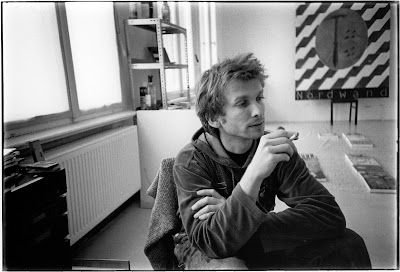A self-taught photographer, strongly influenced by the work of Ansel Adams and Cartier-Bresson, I am impressed by what is technically achievable as well as by the intensity of the decisive moment. The words of Susan Sontag and Roland Barthes are also important to me. My photographs have been published by magazines in New Zealand, Germany, Poland, and Hungary.
Born (1959) on a dairy farm in southern Hawkes Bay, as a child I explored – farmland, forests, mountains; eventually the rest of my country, and then the rest of the world. I would always bring something home to show and tell my mother and father about. When I was in my early 30's I suddenly realised that was the core of what I was doing with photography: there was something that I discovered that had to be shared. And that the truth still matters!
I have settled in a small city in former East Germany – it’s a place to study and document the effect of the western economic, political and philosophical way of life on a populace that has been taught a conflicting ideology. I feel my adopted home is now the borderline between two great philosophical ideas.
The self-portrait, or for that matter, any photographic image, is not a mirror as one might think, it is a kind of infinite sum (an unrepeatable frozen moment, chemistry, form, mental and spiritual layers...) therefore it possesses more meaning than what you may discover from the real person (see Barthes). It means one may approach the truth through contemplation and surprise, hence "I am not who you think I am; I am more like my photograph".
The self-portrait, or for that matter, any photographic image, is not a mirror as one might think, it is a kind of infinite sum (an unrepeatable frozen moment, chemistry, form, mental and spiritual layers...) therefore it possesses more meaning than what you may discover from the real person (see Barthes). It means one may approach the truth through contemplation and surprise, hence "I am not who you think I am; I am more like my photograph".
|
|
I Am Not Who You Think I Am (I Am More Like My Photo)
A self-portrait in an existential crisis moment referring to Roland Barthes treatise Camera Lucida on the photo and identity “…another kind of meaning that arises almost accidentally yet without being simply 'the material' or 'the accidental'; this is the eponymous third meaning.”
|
A Man and a Dog
Inspired by Sam Hunt´s line “A man can only find himself when lost”. Piha beach. |
Figure A woman (skin like porcelain, fragile) has turned away, hesitating, at once vulnerable and contemplative. The negative space to mark that there is much behind her, yet the shadow is still before her… Is it possible to escape from ourselves? |
|
|
Karl-Heine Kanal
Industrial, built in a golden age. Now almost still, stagnant, stinking. Yet the sun still shines, and efforts are being made to rejuvenate it for recreational use. Life – death –life. |
The Warrior
In Kenya in 1990…far from the tourist track, a young man who had just returned from a successful hunting trip: to hunt down and kill raiders armed with guns who had stolen girls and animals from his village. To be suddenly confronted with the normality of such an existence was heart-stopping, and the look he gave me was indescribable.
 | ||||||||
Waitress Maxi One of the lost generation of east Germans, whose parents were infused with the socialist mentality, only to have their secure little bubble burst with the east-west reunification in 1990. Nobody can guide her into this new world. I started this project over 10 years ago, but already see a change in attitude as the younger ones seem to be somehow tougher. It is a document of the human condition, as the portrait should be able to tell you more about the world we live in than images of the world itself. |
 |
Worker He has no name. I didn´t pose him. I simply stood back and allowed him to position himself…to present himself to the world as he wished. I don´t know his world. He grew up as a socialist worker, was given his role and his patriotism. That it collapsed in 1989 doesn´t seem material to him; he is who he is, and is proud yet slightly perplexed. |














No comments:
Post a Comment